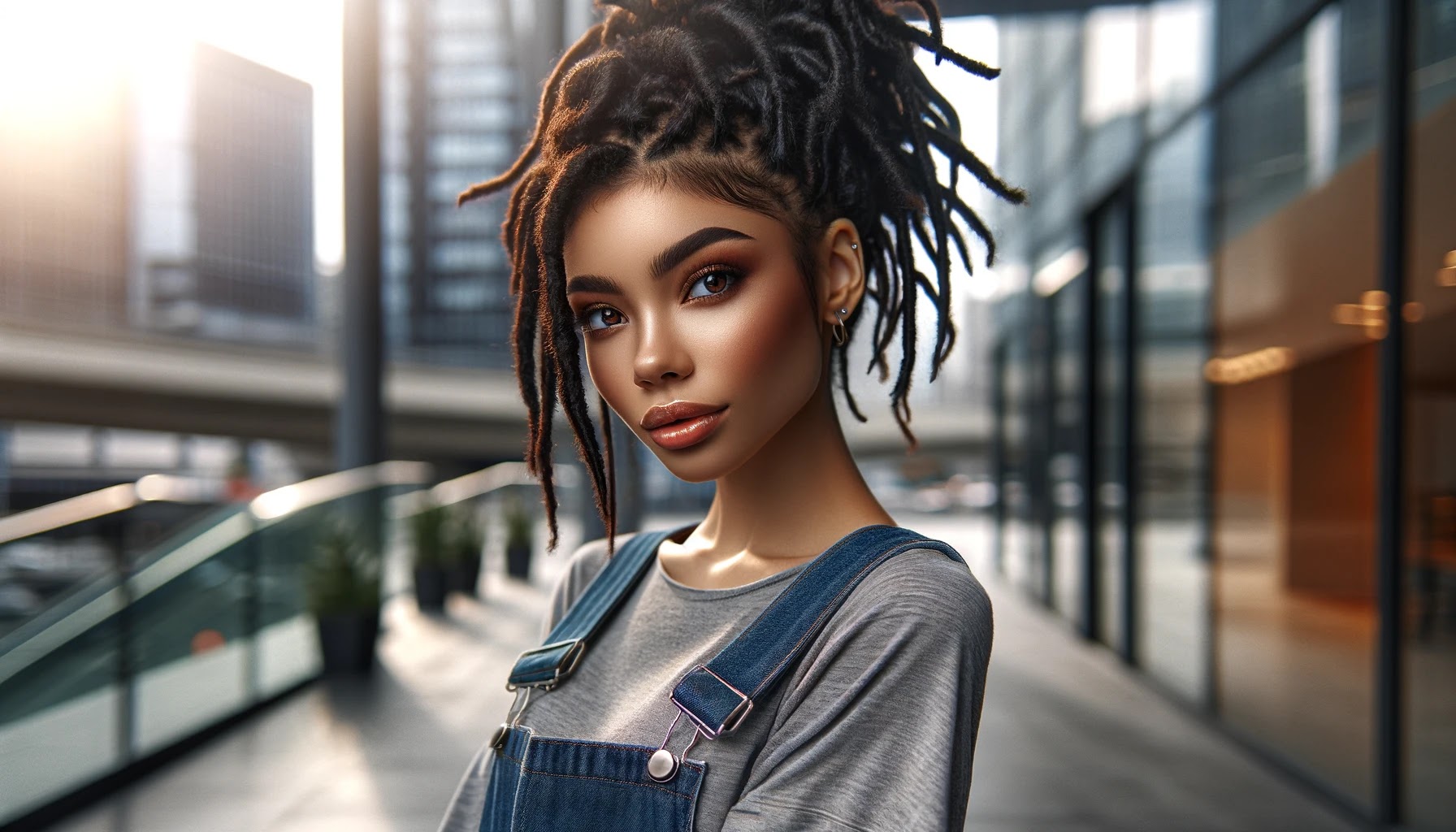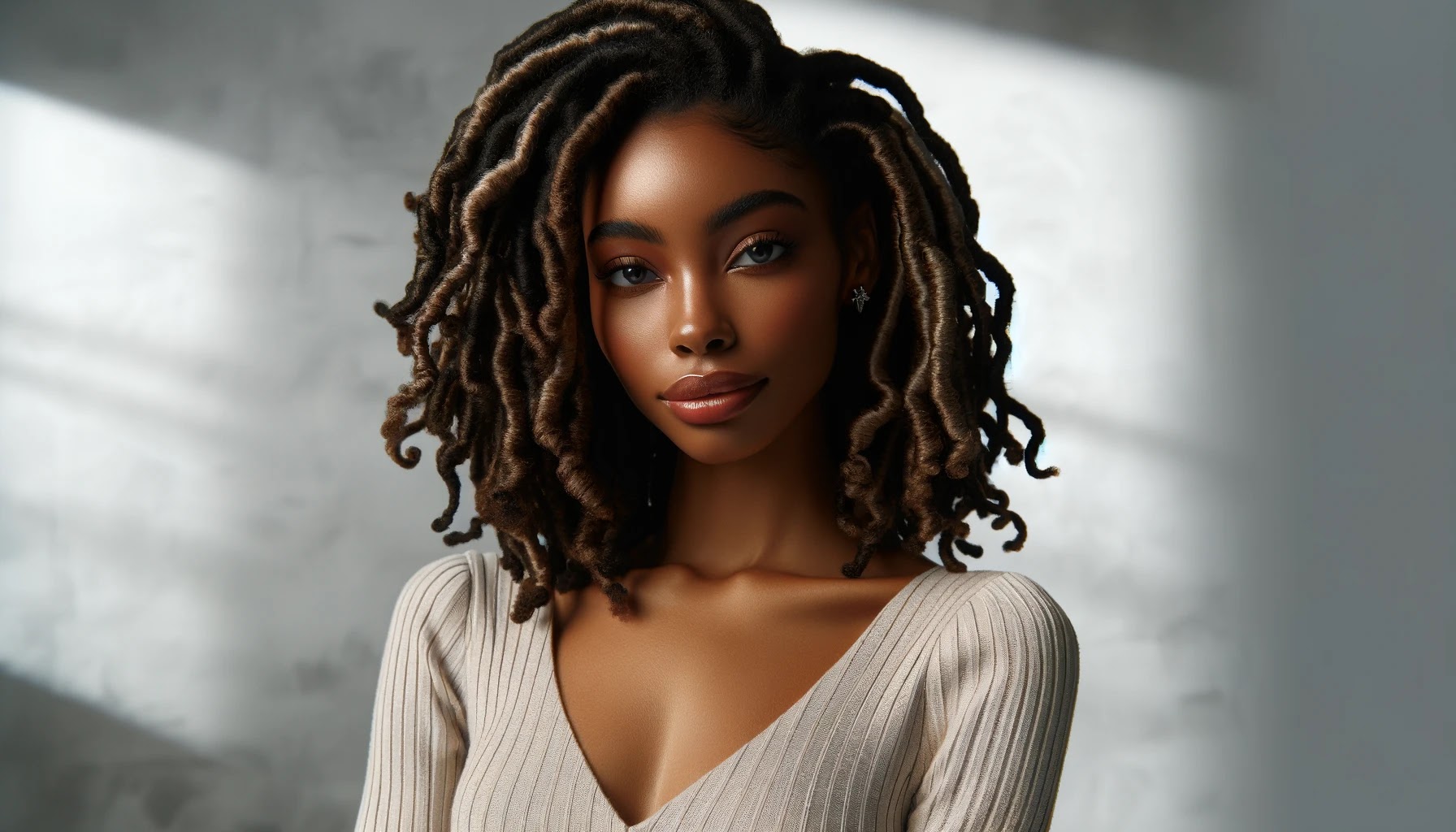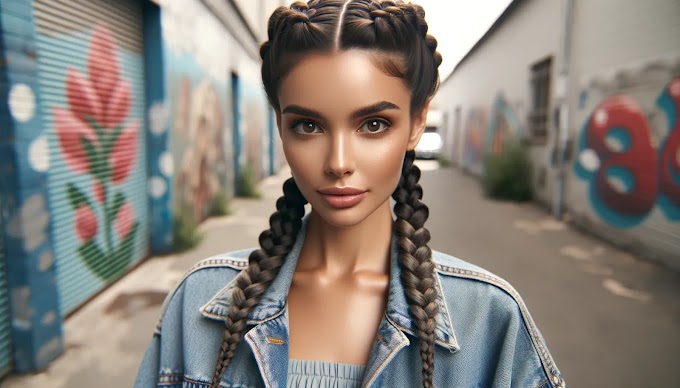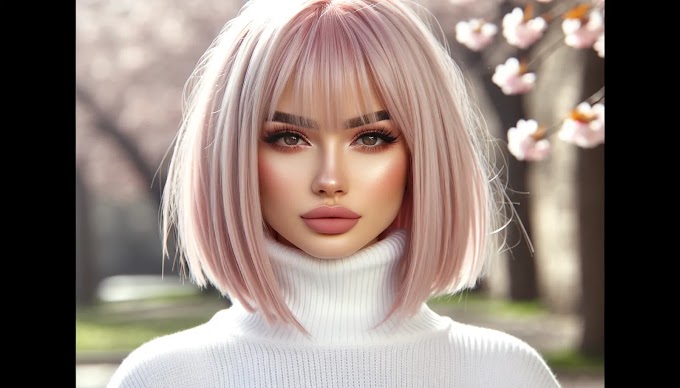Faux locs, a dynamic and increasingly popular hairstyle, offer a unique blend of cultural homage and contemporary fashion. This style, which mimics the appearance of traditional dreadlocks, allows individuals to experiment with a dreadlock look without the long-term commitment or the extensive process of growing and maturing natural dreadlocks. Faux locs can be made from a variety of materials, such as synthetic or human hair, and come in an array of lengths, colors, and textures, catering to a diverse spectrum of personal styles and preferences. This versatility not only makes them a favorite among those seeking a temporary yet bold hair transformation but also serves as a medium for expressing individual identity and style.
The Origin of Faux Locs
To understand the origin of faux locs, one must first delve into the history of dreadlocks themselves. Dreadlocks have been a part of numerous cultures throughout history, dating back to ancient civilizations. Notably, they were found in ancient Egypt, as depicted in artifacts where individuals were shown with dreadlocked hair. Similarly, dreadlocks have been a part of Indian history, associated with the deity Shiva and the ascetic yogis. However, it is the Rastafari movement of Jamaica in the 1930s that most prominently popularized dreadlocks. This movement, intertwining religious, political, and cultural elements, adopted dreadlocks as a symbol of their ideology and a connection to their African heritage.
Evolution into Faux Locs
The transition from traditional dreadlocks to faux locs began as a fusion of cultural appreciation and modern fashion. In the late 20th and early 21st centuries, as the globalization of culture expanded, so did the interest in dreadlocks. However, committing to natural dreadlocks requires a significant investment of time and maintenance, which led to the innovation of faux locs.
Faux locs emerged as a versatile alternative, allowing individuals to experiment with the dreadlock style temporarily. Initially adopted within communities of African and Caribbean descent, these extensions quickly gained popularity across diverse ethnicities and cultures. They offered a way to honor the traditional dreadlock style while providing a flexible, less permanent option.
Cultural Significance and Controversy
The adoption of faux locs has not been without controversy. Some view it as a form of cultural appropriation, particularly when individuals from non-African or non-Caribbean backgrounds adopt the style without understanding its historical and cultural significance. However, others see it as a form of cultural appreciation and a celebration of diversity.
Regardless of the varying opinions, faux locs have become a canvas for personal expression. They represent a blend of past and present, tradition and innovation, making a statement in both the fashion world and in individual identity.
Stylistic Development
The aesthetic appeal of faux locs has evolved significantly. Initially, they were designed to closely mimic natural dreadlocks. However, as their popularity grew, so did the variety of styles. Today, faux locs come in different lengths, colors, and textures. Innovations like Goddess locs – a softer, wavier version of faux locs – and Bohemian locs – which incorporate elements like braids and curls – have further diversified the style.
Material and Method
The materials used for faux locs have also evolved. Originally made from synthetic fibers, there are now options including human hair, which offers a more natural appearance and texture. The method of installation varies from crocheting the locs into braided hair to wrapping hair around individual braids or twists. This flexibility in installation methods makes faux locs accessible to a broader range of hair types and preferences.
Impact on Fashion and Beauty Industry
Faux locs have made a significant impact on the fashion and beauty industry. Celebrities and influencers have embraced the style, showcasing it on red carpets and social media platforms. This visibility has played a crucial role in popularizing faux locs and introducing them to a wider audience.
The Future of Faux Locs
As the world becomes increasingly interconnected, the evolution of hairstyles like faux locs highlights the ongoing dialogue between cultural heritage and modern fashion. Faux locs continue to evolve, incorporating new styles and techniques, and their popularity shows no signs of waning. They stand as a testament to the dynamic nature of cultural expression and the beauty of adopting and adapting traditional styles in contemporary contexts.
Faux Locs Styles
This innovative hairstyle comes in various styles, each with its unique charm and flair. From the elegant goddess faux locs to the chic faux locs bob, the diversity of faux loc styles caters to a wide range of tastes:
Bomba Faux Locs
Bomba faux locs are a distinctive and increasingly popular style within the faux locs family, known for their voluminous and textured appearance. This style uses the Bomba dreadlocks, which are pre-made synthetic locs known for their lightweight yet full-bodied texture. Bomba faux locs stand out for their natural-looking finish and their ability to mimic the feel and movement of real dreadlocks. The locs can range from smooth and sleek to more rugged and natural-looking, depending on personal preference. What sets bomba faux locs apart is their fluffy and soft texture, which provides a comfortable wearing experience while offering a bold and expressive aesthetic.
Goddess Faux Locs
Goddess faux locs, also known as soft faux locs, are more romantic version of the traditional faux locs. This style is characterized by its wavy or curly ends, giving a more feminine and whimsical appearance. The locs are typically lighter, allowing for a more flowing and graceful look. Celebrities like Meagan Good have popularized this style, showcasing its elegance and versatility. Goddess faux locs can be worn in various lengths and colors, making them a favorite for those seeking a sophisticated yet bohemian look.
Faux Locs Bob
The faux locs bob is a modern twist on the classic bob hairstyle. This style maintains the sharp, clean lines of a traditional bob but adds the texture and volume of locs. It's a great option for those who prefer a shorter, more manageable length while still enjoying the locs' look. This style can range from a neat and sleek appearance to a more playful and tousled look, making it adaptable to both formal and casual settings.
Crochet Faux Locs
Crochet faux locs are a popular method of installing faux locs. This technique involves crocheting pre-made locs into cornrowed natural hair. It's a time-efficient and less stressful method on the scalp compared to other installation techniques. Crochet faux locs offer a highly realistic look and can be found in various textures and lengths. This method has made faux locs more accessible and manageable, particularly for those with less time for hair maintenance.
Wavy Faux Locs
Wavy faux locs combine the traditional loc style with a wavy texture. This style offers a unique blend of the structured look of locs and the softness of waves, adding a playful and casual element to the hairstyle. Wavy faux locs are perfect for those who want to add a bit of edge to their look without committing to the more traditional, straight loc appearance.
Messy Faux Locs
Messy faux locs embrace a more bohemian and effortless vibe. This style is characterized by a less structured and more relaxed look. The locs are often of varying sizes and have a more natural, "undone" appearance. This style is ideal for those who prefer a more organic and free-spirited look, reflecting a laid-back and artistic lifestyle.
Faux Locs Updo
The faux locs updo is a testament to the versatility of this hairstyle. Locs can be styled into elegant buns, sophisticated top knots, or intricate braided designs. This style is perfect for formal events or when you want to add a touch of elegance to your look. The updo showcases the locs' texture while keeping the hair neatly away from the face, combining functionality with style.
Faux Locs Mohawk
The faux locs mohawk is an edgy and bold adaptation of the traditional faux locs style, perfect for those looking to make a statement. This style merges the rebellious spirit of a mohawk with the textured allure of locs, resulting in a striking and unconventional look. In a faux locs mohawk, the locs are typically styled to stand up or to the side in the classic mohawk shape, while the sides of the head can be either shaved, closely cropped, or left with shorter locs for a softer contrast.
Bohemian Faux Locs
Bohemian faux locs represent a uniquely artistic and free-spirited take on the traditional faux locs style, perfect for those seeking a more relaxed and whimsical aesthetic. Characterized by their wavy, often unraveled ends and a mix of textures, bohemian locs exude an effortless, carefree vibe. This style often incorporates elements like loose curls, braids, or even colorful accents, lending it a distinctively eclectic and personalized look. The beauty of boho faux locs lies in their imperfection, celebrating a more natural, 'lived-in' appearance that resonates with those who prefer a softer, more romantic hairstyle.
Jumbo Faux Locs
Jumbo faux locs are a bold and dramatic variation of the traditional faux locs, perfect for those who wish to make a striking style statement. These locs are characterized by their significantly larger size, creating a look that is both eye-catching and edgy. Jumbo faux locs offer a unique texture and presence, adding a sense of volume and boldness to your hairstyle. They are particularly popular for their visual impact and the relatively quicker installation process, given their size. Despite their large size, they can be surprisingly lightweight, making them a comfortable choice for extended wear.
Knotless Faux Locs
Knotless faux locs represent a more recent innovation in the world of protective hairstyles, offering a seamless and natural-looking alternative to traditional faux locs. This style is characterized by its smooth start at the scalp, without the usual small knot that marks the beginning of standard faux locs. The technique involves gradually wrapping the extension hair around the natural hair, starting close to the roots and continuing down the length, creating a loc that appears to grow directly from the scalp. This method not only results in a more natural appearance but also minimizes tension on the scalp, making knotless faux locs a comfortable and less damaging option.Are Faux Locs Easy to Maintain?
Maintenance of Faux Locs
Faux locs are relatively easy to maintain compared to some other protective styles, but they do require specific care to keep them looking fresh and to maintain scalp health.
- Keep Them Clean: While washing faux locs, use a diluted shampoo and focus on cleansing the scalp. It's essential to avoid over-saturating the locs as this can lead to frizz and unraveling.
- Moisturize Regularly: Apply a light oil or hair spray to the scalp and locs to prevent dryness. Avoid heavy products as they can build up and weigh down the locs.
- Nighttime Care: Protect the locs at night by wrapping them in a silk or satin scarf or bonnet. This helps reduce frizz and tangling.
- Limit Styling and Manipulation: Excessive styling can lead to frizz and loosen the locs. Opt for gentle, low-manipulation styles to maintain their integrity.
How Long Do Faux Locs Last?
The lifespan of faux locs can vary depending on the installation method, the type of hair used, and how well they are maintained. On average, faux locs can last anywhere from 6 to 8 weeks.
- Type of Faux Locs: The longevity can vary between different types. For example, lighter locs like goddess or bohemian faux locs may not last as long as traditional, more tightly wrapped locs.
- Installation Method: Crocheted locs tend to last longer and remain neater than wrapped locs, as the crocheting method secures the locs more firmly.
- Personal Care: The more meticulous the maintenance routine, the longer the locs will last. Regular cleansing, moisturizing, and protecting the locs at night can extend their lifespan.
Factors Affecting Longevity
Several factors can influence how long faux locs last, including:
- Hair Type and Texture: Natural hair texture can affect how well the locs stay in place. Finer hair might need more frequent touch-ups.
- Lifestyle and Activities: Active lifestyles or frequent exposure to water (like swimming) can shorten the lifespan of the locs.
- Environmental Factors: Extreme weather conditions, like humidity or dryness, can impact the locs' appearance and durability.
When to Remove Faux Locs
It’s important to recognize when it's time to remove the locs to prevent damage to your natural hair. Signs include:
- Build-up at the Base: If there's significant product build-up or matting at the base of the locs, it's time for removal.
- Tension on the Scalp: If the locs start to feel heavy or cause discomfort, they should be taken out to avoid tension alopecia.
- Natural Hair Growth: Excessive new growth can lead to tangling and matting at the roots.
Tips for Easy Maintenance
To ensure faux locs are easier to maintain:
- Choose the Right Type: Opt for lighter locs if you prefer a low-maintenance style.
- Professional Installation: Having your locs installed by a professional can ensure they are done correctly, reducing the need for frequent touch-ups.
- Use the Right Products: Invest in quality products specifically designed for faux locs or extensions.
Choosing Different Faux Locs Colors
The choice of color in faux locs can significantly impact the overall look and feel of the hairstyle, making it suitable for various occasions:
Black Faux Locs – The Classic Choice
Black faux locs are the epitome of timelessness and versatility. This color is ideal for those who prefer a more natural and understated look. Black locs work well for any occasion, be it a formal event, a business meeting, or an everyday casual look. They blend seamlessly with naturally dark hair colors, offering a cohesive and polished appearance. Moreover, black faux locs serve as a perfect canvas for accessories like beads and rings, allowing for subtle yet impactful personalization.
Purple Faux Locs – Bold and Expressive
Purple faux locs are for those who love to stand out and make a statement. This vibrant color can range from deep, royal purples to softer, pastel hues, each bringing its own unique vibe. Purple locs are perfect for creative events, music festivals, or nights out, where a more adventurous and playful look is desired. They reflect a sense of boldness and creativity, making them a popular choice for individuals looking to showcase their vibrant personality and flair for the unconventional.
Blonde Faux Locs – Sophisticated and Stylish
Blonde faux locs are a great way to brighten up your appearance and add a touch of sophistication. Whether you opt for a golden honey blonde, a platinum shade, or something in between, blonde locs can create a striking contrast, especially for those with naturally darker hair. This color is particularly suitable for summer events, beach outings, or any occasion where a lighter, more vibrant look is desired. Blonde locs also offer the flexibility to experiment with different shades and ombre effects, giving a dynamic and chic edge to your hairstyle.
Gray Faux Locs – Elegantly Edgy
Gray faux locs are a trendsetting choice that exudes elegance and a contemporary edge. This color has gained popularity for its ability to blend sophistication with an avant-garde appeal. Gray locs work well for formal events and high-fashion settings, where a unique and refined look is required. They can range from silver and metallic hues to charcoal gray, each offering a different level of intensity and drama. Gray faux locs are particularly striking when combined with black roots, creating a gradient effect that is both modern and stylish.
Ginger Faux Locs for a Vibrant Look
Ginger faux locs are a bold and vibrant choice, perfect for those looking to stand out. This fiery hue is not just striking but also exudes warmth and confidence. It's an excellent choice for autumn events, where its rich, warm tones can complement the seasonal palette. Ginger locs can also invigorate your look for casual outings, festivals, or creative events, offering a lively twist to your appearance. Pairing these locs with earthy or neutral-colored outfits can create a balanced yet eye-catching ensemble.
Ombre Faux Locs for Versatility
Ombre faux locs blend two or more colors, transitioning seamlessly from one shade to another. This style offers versatility and a contemporary edge, suitable for both casual and formal settings. The gradual color change in ombre locs adds depth and dimension, making them a popular choice for those seeking a stylish yet sophisticated look. Lighter ombre combinations are perfect for summer events or vacations, adding a playful and breezy vibe. Darker ombres, on the other hand, can exude elegance and are ideal for evening events or professional settings.
Burgundy Faux Locs for Elegance
Burgundy faux locs are a deep, rich color choice that speaks of elegance and sophistication. This color can add a luxurious touch to your style, making it ideal for formal occasions like weddings, galas, or dinner parties. Burgundy is a versatile shade that flatters most skin tones and pairs beautifully with both light and dark-colored outfits. For those looking to add a touch of romance or drama to their look, burgundy locs are a perfect choice. They offer a subtle yet impactful way to make a statement, especially in more conservative or upscale environments.
Faux Locs on Different Hair Types
Straight Hair:
Individuals with straight hair might find that their hair doesn’t naturally grip onto the faux locs, making the installation process slightly more challenging. It's often recommended to use a braiding or crocheting method to ensure the locs stay secure. Texturizing the hair slightly before installation can also help the locs adhere better.
Wavy Hair:
Wavy hair can hold faux locs quite well due to its natural texture. The key is to ensure that the locs are not installed too tightly to prevent scalp tension. Wavy hair offers a good foundation for both wrapping and crocheting methods.
Curly Hair:
Curly hair is ideal for faux locs as the natural curls provide a good grip for the extensions. The crochet method works particularly well with curly hair, offering a seamless blend. Care should be taken to moisturize the hair adequately before and after installation to maintain hair health.
Coily or Kinky Hair:
This hair type is the easiest to work with when it comes to faux locs. The natural texture provides excellent grip, making the installation process smoother. Coily hair can handle various types of faux locs and installation methods, allowing for a lot of versatility in style choices.
Maintenance by Hair Type
- Straight and Wavy Hair: These hair types may require more frequent retightening of the locs as they tend to slip more easily. Regular scalp cleansing and moisturizing are also crucial to prevent dryness.
- Curly and Coily Hair: These hair types retain moisture well but can be prone to frizz. Light oils and regular spritzing with water can help maintain the locs' freshness. Avoid heavy products that can cause build-up.
Longevity and Hair Health
The lifespan of faux locs can vary based on hair type. Generally, they can last anywhere from 4 to 8 weeks. It’s important to listen to your hair and scalp to determine when it’s time to remove the locs. Regularly moisturizing your natural hair underneath and keeping the scalp clean will help maintain hair health throughout the wear of the faux locs.
Styling Tips
- Accessorizing: Regardless of hair type, accessorizing with beads, shells, or wraps can add a personal touch to the faux locs.
- Updos and Down Styles: Depending on the thickness and length of the locs, various updos and down styles can be experimented with. However, be mindful of the tension these styles may create on the scalp.
DIY Faux Locs: A Step-by-Step Guide to Achieving the Look at Home
Preparing for Installation
- Choose the Right Hair: Select synthetic or human hair extensions based on your desired look and budget. Kanekalon, Marley, and yarn are popular choices, each providing a different texture and finish.
- Gather Necessary Tools: Prepare a rat-tail comb for parting, hair clips for sectioning, hair gel or wax for grip, and scissors for trimming.
- Prepare Your Natural Hair: Wash, condition, and thoroughly dry your hair. Moisturize your scalp and hair to ensure they're in optimal condition before installation.
Installation Process
- Parting and Sectioning: Decide on the size of your locs and part your hair accordingly. Smaller sections are recommended for thinner locs, while larger sections work for thicker locs.
- Braiding or Twisting the Base: Start by braiding or twisting your natural hair to about an inch or two. This provides a secure base for the locs.
- Attaching the Extensions: Attach the extension to the base of the braid or twist. If using the wrapping method, ensure the extension is secure before proceeding.
- Wrapping: Begin wrapping the extension around the braid or twist, starting from the base. Keep the wrapping tight and even for a uniform look. Use hair gel or wax for additional grip if needed.
- Sealing the Ends: Once you reach the end of the loc, you can seal it by looping the hair through the last wrap and pulling tightly. Alternatively, use a lighter to slightly melt the ends if using synthetic hair, being cautious not to burn the hair.
- Repeat: Continue this process throughout your entire head, ensuring consistency in the thickness and tightness of the locs.
Tips for Successful DIY Faux Locs
- Take Your Time: DIY faux locs can be time-consuming. It's important to be patient and take breaks as needed to avoid fatigue.
- Maintain Even Tension: Ensure each loc is wrapped with consistent tension to avoid lumps and bumps.
- Moisturize Your Scalp: Keep your scalp moisturized throughout the process to prevent dryness and itching.
- Be Mindful of Scalp Tension: Avoid wrapping too tightly to prevent tension and stress on your scalp and hair follicles.
In conclusion, faux locs stand as a testament to the beauty and versatility of protective hairstyles, offering a unique blend of tradition and modernity. Whether you’re drawn to them for their stylish appeal, cultural significance, or the convenience of trying dreadlocks without the long-term commitment, faux locs cater to a broad spectrum of preferences and needs. They embody a form of self-expression that transcends mere fashion, allowing individuals to experiment with different lengths, colors, and styles, all while providing the added benefit of protecting their natural hair. As a symbol of both creativity and heritage, faux locs continue to captivate and inspire, solidifying their place in the diverse world of hairstyling.











0 Comments